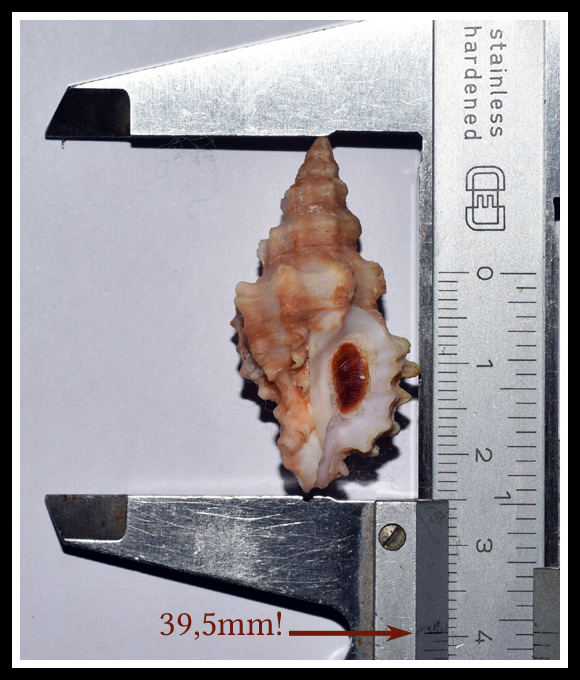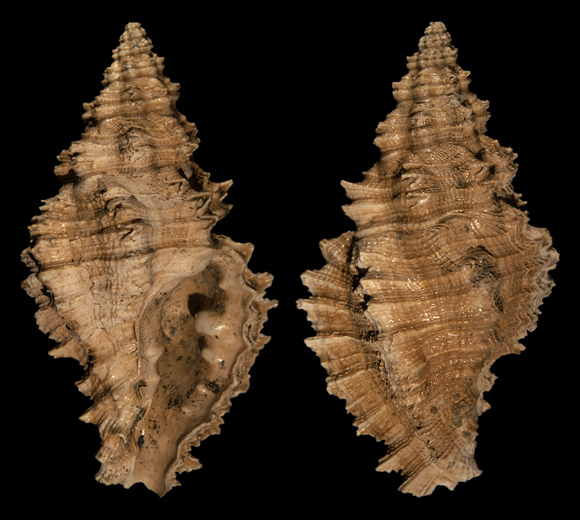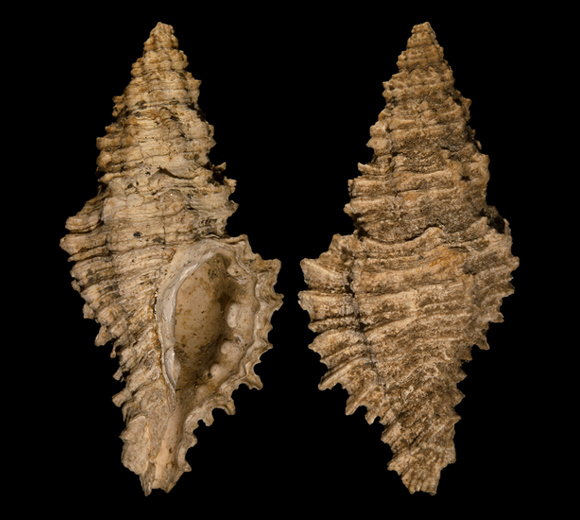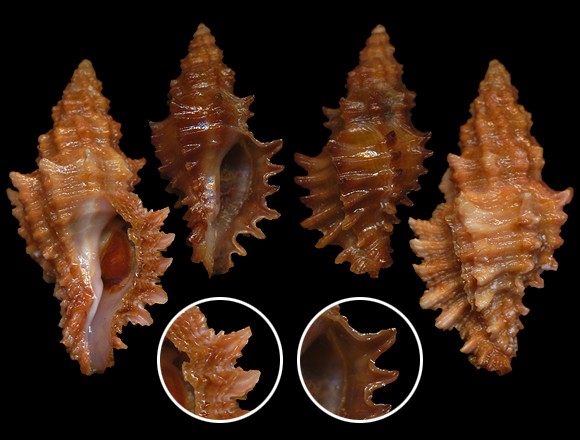
Predator in the infralittoral and the circalittoral.
Original taxon: Murex cristatus.
24mm: 5m deep, St-Georges beach, Lumio, Calvi, W. Corsica.
20mm: 50m deep, on sand & rubble, Gallipoli, Puglia, S. Italy.
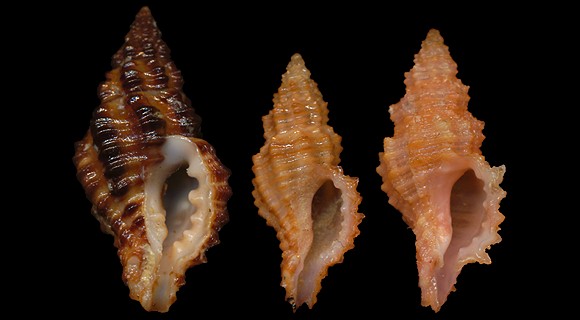
Synonyms: atra, blainvillei & blainvillii, dentatus, pliciferus, polliaeformis, pustulatus, rudis, spinulosa, subspinosus…
Above and below: variations in radial sculpture.
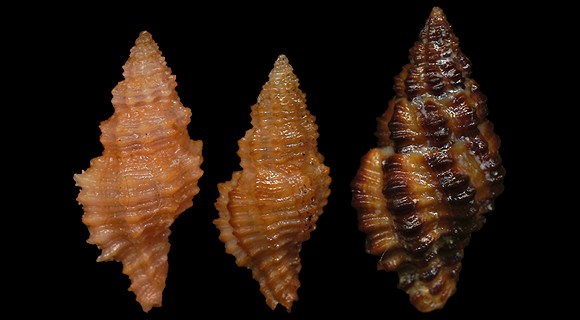
Brown: variant “polliaeformis”. Shallow water on top of rocks, Bali bay, Heraklion, N. Crete. 18mm. – Orange: 2-3m deep, on rocks, Capri island, Campania, SW. Italy. 15,5mm. – Rose-red: at the foot of the cliff, Cassis, Provence, S. France. 17mm.
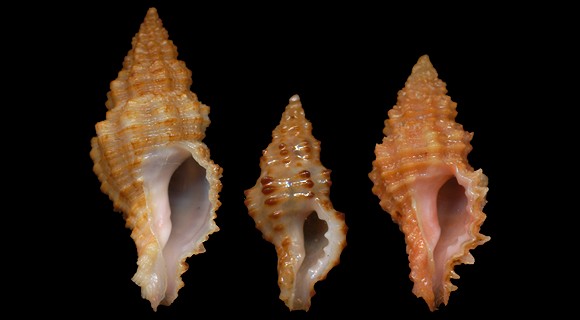
20mm: 20-30m deep, Málaga, Andalucia, S. Spain.
12mm: 100m deep, Isola Maddalena, NE. Sardinia.
14mm: 40-50m deep, Capo Linaro, S. Marinella, Lazio, W. Italy.
12mm: 100m deep, Isola Maddalena, NE. Sardinia.
14mm: 40-50m deep, Capo Linaro, S. Marinella, Lazio, W. Italy.
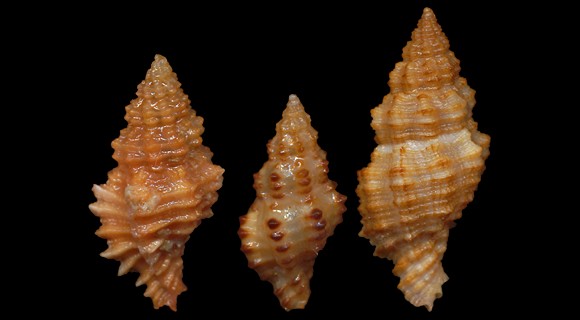
A difference with Murexsul cevikeri Houart is given by the shoulder, which shows two spiral cords that sometimes bear spikes, instead of only one, markedly spiny, in cevikeri.
Many named variants: ampa, berdida, elongata, expallescens, hispida, horrida, oblonga, obsoleta, rosea, spinulata, trophoniformis, ventricosa, violacea…
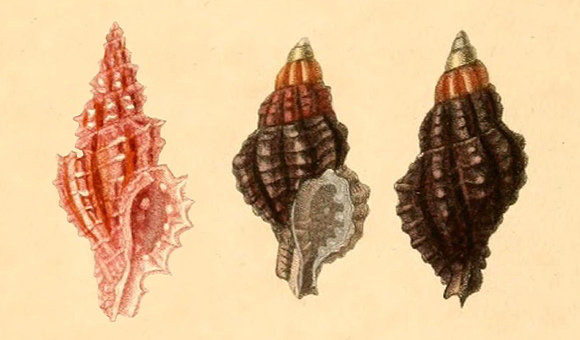
Left: Murex de Blainville plate V, red; right: Cancellaire de Blainville plate V B.
« The shell of this species seems to me to provide many variants, not only by the colour, which ranges gradually from the bright pink to the dark brown or the dirty white, but also by the more or less turriculate shape and by the number of the varices. […] I would not be surprised if the Murex cristatus of Brocchi, fossil in the Piacenzian, were nothing but our Blainville’s Cancellaria. »
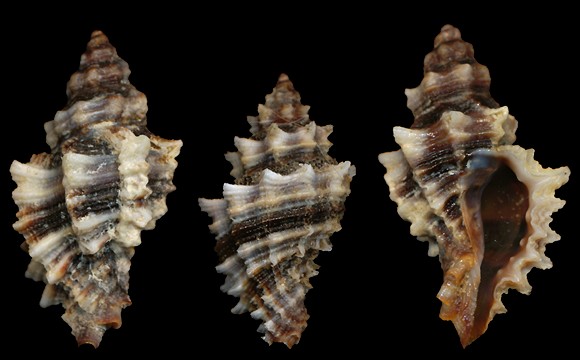
The second spiral cord is obvious (white spines); so, despite the banded pattern, these shells pictured here are not cevikeri, but specimens of cristata, variant “trifasciata” Nordsieck. Also, because of this double cord on the shoulder, the shape is less or not biconical. – 1-2m deep, on rocks, near Bordj el Hassar, Kerkennah island, S. Tunisia. 20-24mm.
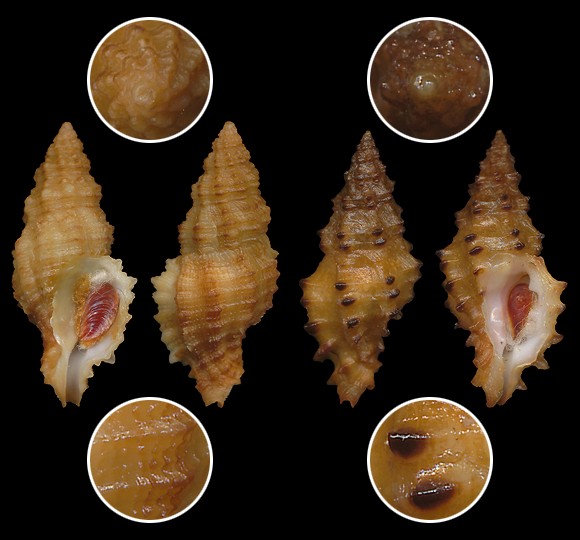
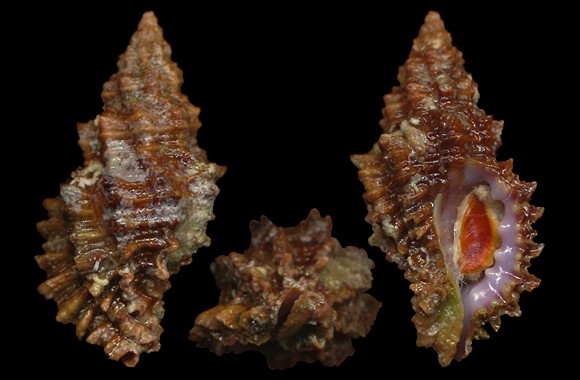
« I suspect it may be a variety of erinaceus, but it has a more turreted form, and is transversely scratched by numerous granular grooves, alternately larger, among which others are very thin. The lower whorl has seven longitudinal ribs, some of which are formed of arcuate scales and others of simple knots. The one next to the margin of the right lip is more noticeable than the others and almost thorny. The lip itself is internally toothed; the left one has some folds near the lower end, and the canal of the base is somewhat twisted backwards. » – G. Brocchi: Conchiologia fossile subapennina vol. II, Milano 1814, p.394.
A large and rather « crispata » cristata.
2m deep, on rocks, near the ruins, south-eastern shore of Spinalonga island, facing Kolokitha islet, Elounda, Kolpos Mirabellou, Lasithi, N. Crete. 26mm.
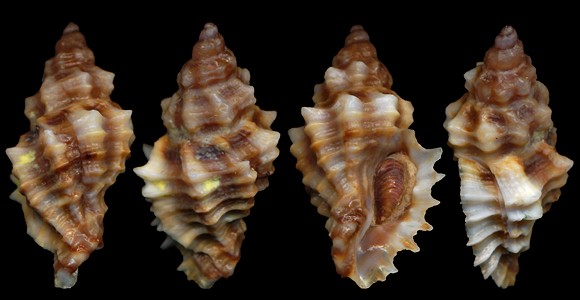
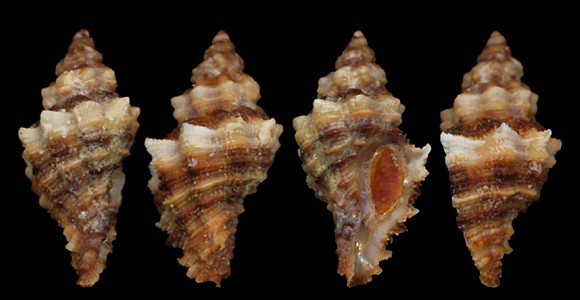
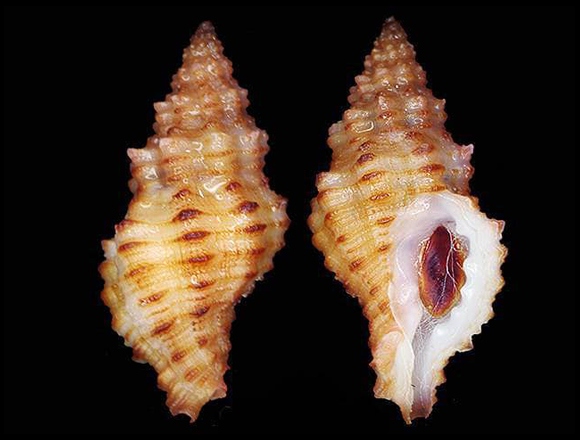
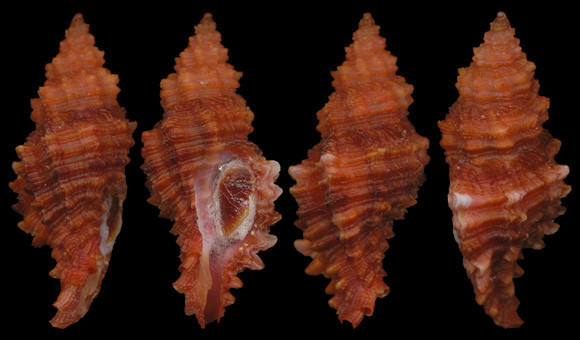
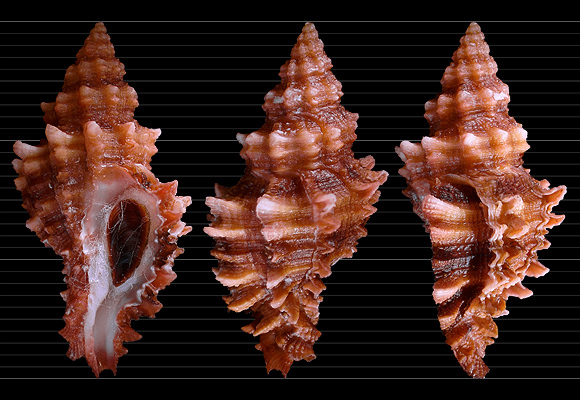
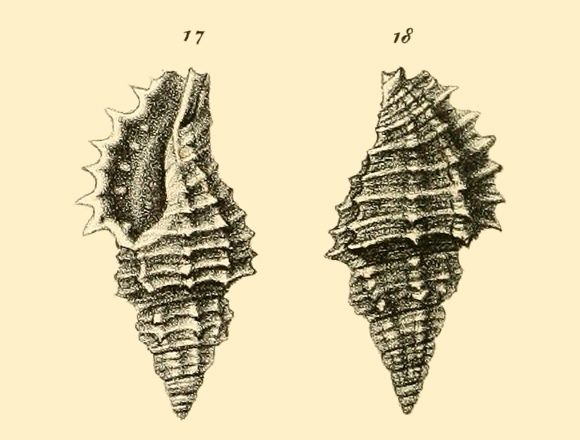
« Shell fusiform, a little umbilicated, sometimes of pinkish or whitish colour, most often of a beautiful red; composed of six to eight convex whorls; furrowed longitudinally and wrinkled across; the wrinkles being slender, high and acute; aperture of the same colour as the rest of the shell, showing in the bottom four small tubercles of pure white, the right edge slightly wrinkled having five. Dedicated to the learned professor M. de Blainville, member of the Academy of Sciences. » – Payraudeau: op. cit. p.150.
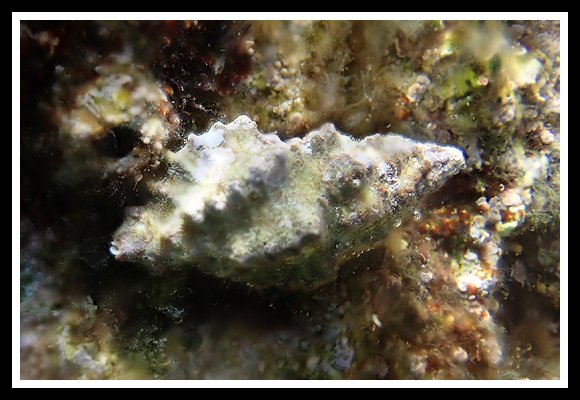
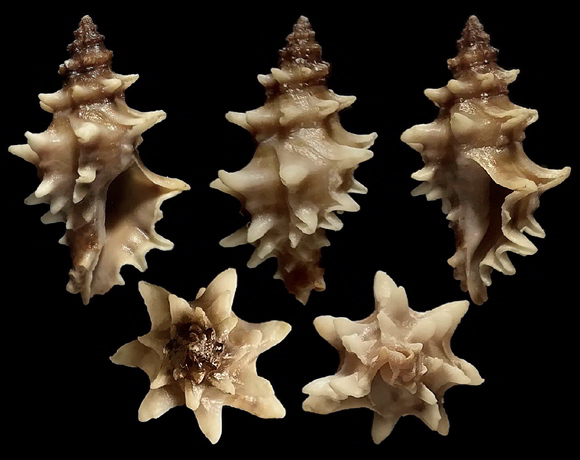
– (CC BY-NC-SA) –
